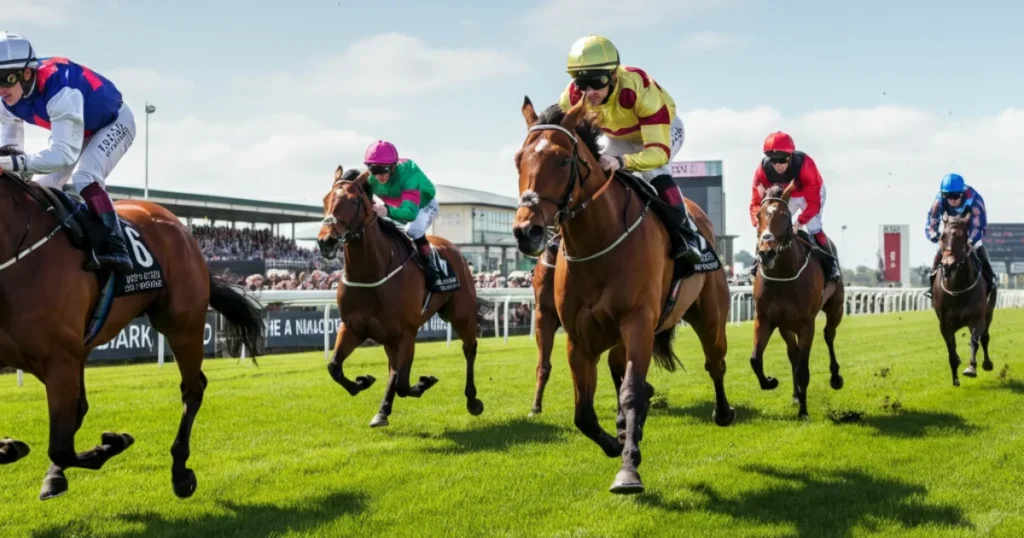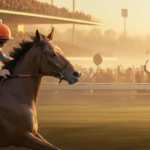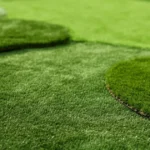Horse racing has always been a sport of precision, speed, and tradition. But as with all sports, innovations aimed at improving performance, safety, and sustainability have emerged over time. One such game-changer is base turf—a track surface that has gained popularity for its durability, safety, and influence on race outcomes.
If you’re a horse racing enthusiast, fan, or part of the betting community, understanding base turf gives you insight into how the sport is evolving. In this blog post, we’ll break down everything you need to know about base turf—from its composition to its impact on racing and its potential future in the industry.
What Is Base Turf?
Base turf refers to a specially designed synthetic surface used in horse racing tracks. Unlike traditional dirt or grass tracks, base turf combines synthetic materials, often layered with sand, fibers, and elastic components. This hybrid composition creates a more consistent and resilient surface, designed to enhance performance and reduce injury risks for thoroughbred horses.
Base turf is part of the industry-wide push to modernize horse racing, specifically with innovations that prioritize horse welfare and improve race conditions. While adoption is still growing, it’s becoming essential to know how base turf affects the sport, from both performance and wagering perspectives.
The Composition of Base Turf
To truly understand the advantages of base turf, it helps to know what it’s made of and how it’s designed to perform.
Key Components of Base Turf
- Synthetic Fibers
Base turf incorporates durable synthetic fibers, such as polypropylene, which mimic the softness of grass while adding reinforcement for longevity. These fibers also help prevent the surface from compacting excessively.
- Silica Sand
Sand serves as the primary layer, providing the firmness and stability needed to support a horse’s weight and maintain speed during races.
- Elastic Polymers
Elastic components like rubber granules are added to absorb shock and reduce the strain on horses during high-speed racing.
- Water-Resistant Layers
Base turf includes layers designed to drain water effectively, ensuring that tracks remain functional and safe during wet weather without becoming overly slick.
How It Is Constructed
Base turf is installed in multiple layers, starting with a solid, carefully graded foundation. Depending on the region and climate, manufacturers adjust the mixture to balance drainage, firmness, and shock absorption. The result is a high-performing, multi-functional racing track surface.
Benefits of Base Turf for Horse Racing
Innovations usually inspire skepticism at first, but base turf has earned its reputation by delivering tangible benefits in several key areas.
1. Enhanced Horse Safety
Traditional dirt and grass tracks can be uneven or prone to erosion, increasing the risk of injury. Base turf, by contrast, distributes pressure more evenly, reducing strain on horses’ joints and minimizing the chance of career-ending accidents.
2. Consistency Across Races
One standout quality of base turf is its ability to provide uniform track conditions regardless of weather. Whether a track is exposed to heavy rain or scorching heat, the synthetic surface remains stable, leading to fewer race-day surprises for trainers, jockeys, and bettors.
3. Improved Performance
The firm yet cushioned surface of base turf enables horses to reach their full stride without compromising their footing. This has led to faster race times and more reliable performances across the board.
4. Water Efficiency
For tracks in regions where water resources are a concern, base turf significantly reduces maintenance needs compared to grass tracks that require constant watering.
Comparing Base Turf to Other Track Surfaces
The advantages of base turf come into sharp focus when we compare it to traditional surfaces like dirt and grass.
|
Track Surface |
Advantages |
Disadvantages |
|---|---|---|
|
Grass |
Aesthetic, softer on joints |
High maintenance, weather-dependent |
|
Dirt |
Familiarity, affordability |
Higher injury rate, inconsistent conditions |
|
Base Turf |
Safety, durability, weather-resistant |
High initial installation cost, adoption resistance |
For those involved in betting, base turf is especially appealing as it offers predictable conditions that reduce variables affecting race outcomes.
Maintenance and Longevity of Base Turf
One of the standout features of base turf is its sustainability. While the initial cost of installation may be steep, the low maintenance required makes it more cost-effective in the long run. Here’s a glimpse into what goes into maintaining base turf tracks:
- Routine Grooming
Specialized equipment is used to brush, level, and loosen the surface layers regularly to maintain consistency.
- Water Drainage Checks
Even though base turf is designed with effective drainage, periodic inspections ensure that the system works efficiently after heavy rains.
- Material Refreshments
Over time, some of the elastic and fiber materials may degrade slightly. Tracks can easily be refreshed by replenishing or mixing in new materials.
On average, base turf can last up to 10-15 years with proper care.
Notable Races on Base Turf
Over the past few years, base turf has been the venue for some dramatic and memorable races. High-profile racetracks, such as Keeneland in the United States and Dundalk in Ireland, have led the way in using this advanced surface.
One notable event was the [Race Name/Year] held at [Track Name], where the consistent conditions of the base turf enabled a record-breaking time and a thrilling photo-finish. These races have only added to the growing popularity of base turf in the horse racing world.
The Future of Base Turf in Horse Racing
The adoption of base turf is steadily increasing as more racetracks recognize its potential to enhance the sport. Additionally, ongoing research and technological advancements promise to make these tracks even safer, less expensive, and more environmentally friendly in the coming years.
That said, there are challenges. Traditionalists within the industry often hesitate to fully transition away from established surfaces. However, as base turf continues to prove its worth, it’s likely to become an integral part of the modernization of horse racing.
Why Base Turf Matters for the Future of Racing
Base turf is more than just a racing surface; it’s a symbol of the sport’s evolution. It prioritizes the safety and well-being of the horses we love, delivers consistency for fans and bettors alike, and aims to meet the modern demand for sustainability in all industries.
Whether you follow horse racing for the thrill of competition or the strategy of betting, base turf reshapes the way we experience this timeless sport.
Interested in learning more about racetrack innovations or horse racing trends? Stay tuned to our blog for updates, insights, and expert analysis!







